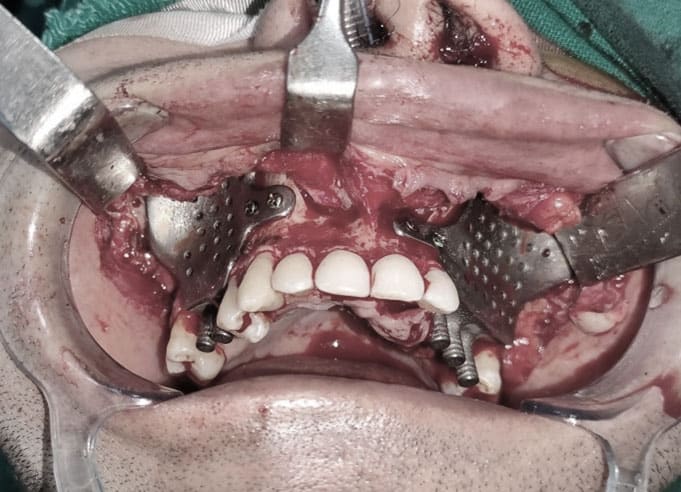The reconstruction of acquired maxillary bony defects after facial trauma is among the most challenging areas in oral and maxillofacial reconstruction. The main goal of these reconstructive efforts is to maintain or improve the patient’s quality of life by trying to restore the lost form and function. Reconstructing the maxillary deformities can be largely benefited from virtual pre-operative planning procedure.
One such medical 3D printing solution provider Jajal Medical provides customized Oral maxillofacial implants. The patient-specific designs and 3D models can be used to create prototypes, duplicate broken parts, and even entire organs.
Challenge
Maxilla is the most important bony support of the midface skeleton and is critical for both aesthetics and function. Thus, maxillary defects, such as those resulting from gunshot injuries, can cause severe functional deformities. Treatment in these patients is very challenging. Moreover, post-treatment infections are a serious problem in such cases. Thus, step-by-step surgery is essential to obtain a better result in these patients.
One such case was treated by Dr. Vivek Saxena, New Delhi considering the 3D-printed titanium implant with pre-mounted dental implant fixtures.
The team of Jajal Medical worked closely with the surgeon for pre-op planning and intraoperative support with 3d printed patient-specific implant.
Solution
Detailed preop planning played a pivotal role in the outcome of the surgery. Virtual session through a digital point of care 3D printing platform Mysegmenter.com helped Dr. Vivek understand the perception and intended use. Once the requirements were clear the complete plan was proposed to the surgeon. He further decided to lay down the sub-periosteal (wire frame to strengthen the weak bone and add dental abutments) maxillary implants with thick and strong surface.

Outcome:
The implant was successfully inserted, and the discontinuous maxillary defect was rehabilitated with 3D-printed titanium implants on both sides.

Preplanning the surgical approach and use of the customised surgical guides and patient specific implant, helped in achieving accurate reconstruction, reduced intra-operative time and faster recovery of the patient.

